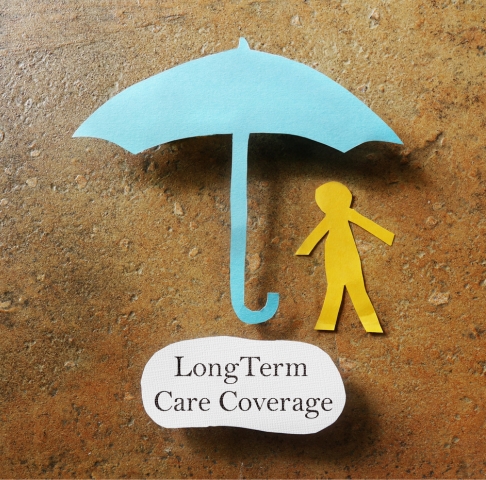Chest pains are no laughing matter, but I couldn’t help laughing when a colleague said she had “heart pains” after our gym workout together some years back. She was always cracking unexpected jokes and had just broken off with her boyfriend, so I thought this was another one of her act-silly moments… until I realised she wasn’t chortling along with me as usual.
Describing it as an intense stabbing pain, she squeezed her eyes shut and slowly sat down. We both thought she might be experiencing a heart attack as heart disease runs in her family, so to be safe, we headed to a clinic nearby. As a lifestyle writer back then, I knew that heart disease was common in Singapore. In 2022, cardiovascular disease was responsible for 31.4% of all deaths, i.e. almost one in three deaths was due to heart diseases or stroke1.
Thankfully, the doctor ruled out a heart attack and diagnosed it as a pinched nerve, possibly from a wrong exercise move earlier. We were relieved, but it was still a scary experience!
Read my tips to conquer your health resolutions and keep chronic illnesses away.
Chest pain isn’t always due to heart problems
Chest pain is one of the signs of a heart attack, but not all chest pains signal a heart attack – in fact, they often don’t have anything to do with the heart.
Discomfort in the area could be due to many other things. Some, like air in the lining of the lungs or a ruptured digestive tract, are more serious problems, while less worrying reasons for the pain include stress and indigestion.
According to Dr Tan Svenszeat, a cardiologist at Orchard Heart Specialist Clinic, the common types of chest pain one could experience are typically benign and musculoskeletal in nature.
“This means the pain usually arises from muscles and bones, not the important organs within the chest, such as the heart, oesophagus and lungs. However, one needs to understand the character of the pain in order not to miss important conditions that may be life-threatening, like a heart attack,” he says.
Common questions about chest pain answered
Dr Tan, who specialises in interventional cardiology with a focus on patients with coronary artery blockage, clears the air about chest pains and advises when to seek medical attention in the Q&A below.
Is chest pain always a sign of a heart attack or some other heart problem?
Understanding the character of the chest pain is important to determine the underlying problem. It can be something harmless like bone and muscle aches or it can be something requiring urgent medical attention.
Potential life-threatening causes of chest pains are:
- a heart attack
- blood clots in the lungs
- air within the lining of the lungs
- a tear in a major artery
- a lung infection
- a ruptured digestive tract
All of these can cause chest pain because the organs involved are all located within the chest wall close to each other. Their symptoms can sometimes mimic one another. However, there are subtle differences that you can look out for to distinguish between different types of chest pain.
Does my age have anything to do with chest pains?
Depending on your age group, your chest pain could have different causes.
If you’re under 40, a common cause would be a tear of the big artery of the heart and if you’re over 40, there’s a high chance it might be due to a lung infection.
How do I tell the difference between heart-related chest pain and non-heart chest pain?
Depending on the type and location of your chest pain as well as the presence of other accompanying symptoms, it could be due to anything from musculoskeletal strain to a heart attack.
Learning to understand the character of a chest pain using the table above can help put your mind at ease. It’s important to note that some of these conditions are potentially life-threatening and need hospital treatment. If you’re in pain and unsure what the cause might be, it’s probably best to call for an ambulance.
I don’t have a family history of heart disease, and I eat reasonably well and exercise occasionally. Any sudden chest pain shouldn’t be a cause for concern, right?
Individuals who lead a healthy lifestyle and don’t have family history of heart disease are at significantly lower risk of developing a heart attack, so any pain in the chest is most likely due to musculoskeletal strain. However, don’t ignore the chest pain as it could be a sign of other serious health problems. You should also remember that despite having a healthy lifestyle, one can still develop blockage of the arteries, which can lead to a heart attack.
Check out the health checks every man should do.
What are the signs of a medical emergency?
If you experience any of the following, seek medical treatment immediately:
- dull ache on the front-centre of the chest
- pain that moves to the jaw and upper arm
- accompanying cold sweat and nausea
The sooner treatment is rendered, the better the outcomes and death can potentially be avoided. So, it’s best not to bear with the pain and wait till it goes away, especially if the pain is prolonged and accompanied with shortness of breath or dizziness due to low blood pressure.
At the extreme end of a medical emergency, an individual may collapse due to a heart attack. By this time, their heart would have stopped pumping and need to be revived immediately through cardiopulmonary resuscitation.
I think I may have an underlying heart problem. What should I do?
There are ways to determine if someone is at risk of getting a heart attack. Advances in medical technology have made it possible to diagnose things like narrowing of the heart arteries as well as assess the potential risk of future events like heart attack and death due to these causes. Not all tests are suitable for everyone, however. Hence, it’s best to seek advice from a cardiologist to determine which test suits you.
Treating heart problems
According to Dr Tan, the type of heart treatment patients undergo depends on the condition they are experiencing.
Heart attack: If the patient has a heart attack, i.e. totally blocked heart arteries, for instance, the arteries will need to be unblocked through a procedure called angioplasty. This should be done as quickly as possible as there will be permanent damage to the heart muscle if blood flow is not restored quickly.
Severe artery blockage: The patient may be advised to undergo a coronary artery bypass graft. In this surgery, new routes are created around clogged and narrowed major blood vessels, usually using blood vessels from another part of the body, in order to restore normal blood flow and oxygen supply to the heart.
“Another important aspect of managing heart ailments is medication. Taking long-term medication may reduce the risk of a heart attack and even death in those with heart ailments,” advises Dr Tan.
When it comes to matters of the heart, I’ve learnt from Dr Tan that it’s better to be safe than sorry. That means knowing how to recognise different types of chest pain and what they could mean. In life-threatening cases like a heart attack, taking appropriate action immediately could potentially mean a life saved and less permanent damage to the heart, which could impact not only the patient’s quality of life but that of their loved ones too.
Need to see a heart specialist? If you’re a Singlife Shield customer, you get priority access to panel specialists which means earlier appointments.
Notes
1. Source: Singapore Heart Foundation, Heart Disease Statistics, accessed on 4 September 2023.








